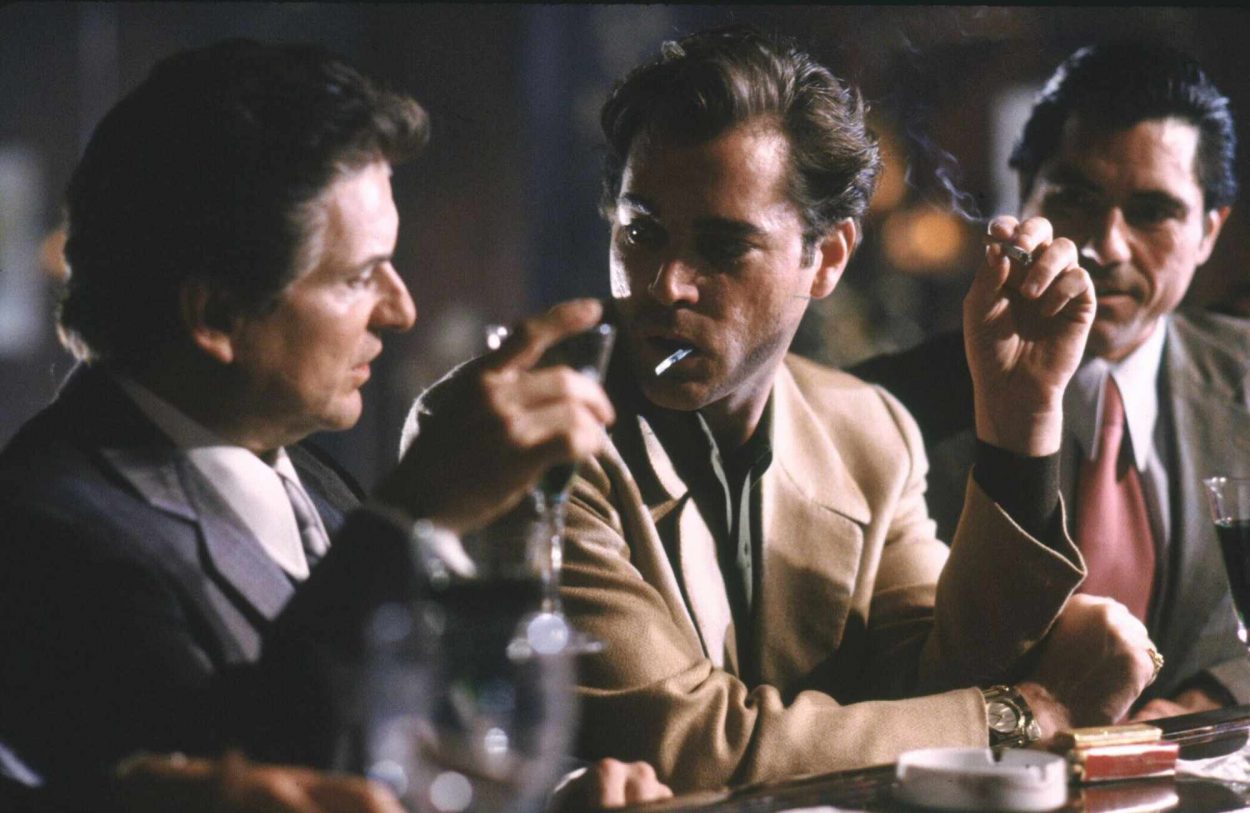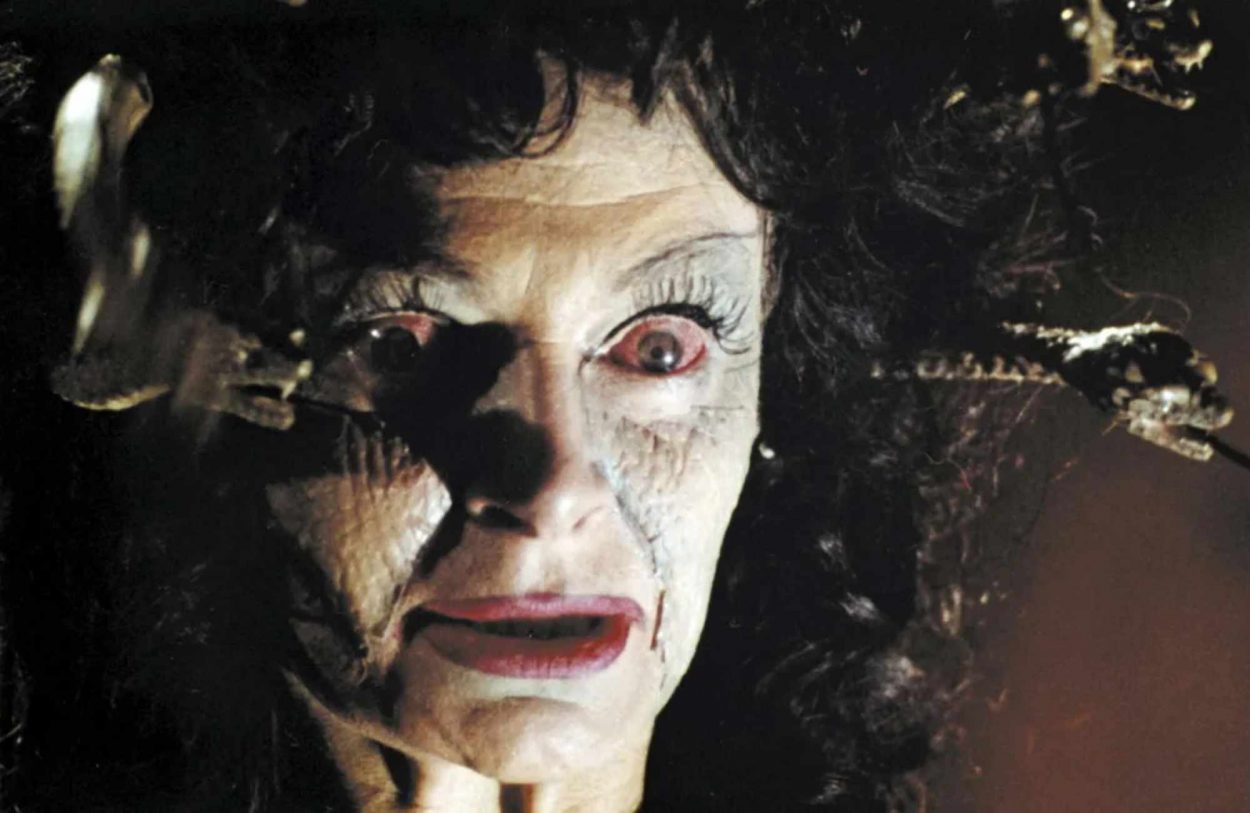Nicholas Meyer’s Star Trek II: The Wrath of Khan (1982) and Leonard Nimoy’s Star Trek IV: The Voyage Home (1986) – playing as a double feature on August 4th & 5th – are often considered, to the modern Trekkie, to be “the good ones” in the long-running series, now 13 films old. Star Trek II is beloved for its slick direction, adult themes of aging, and, more than anything, the gloriously loud performance from Ricardo Montalbán as the wrathful title villain. Star Trek IV, meanwhile, is beloved for its energetic comedy, it’s relatable modern-day setting, and weird, topical premise: sse time travel to Save the Whales. Even when not adjusted for inflation, Star Trek IV remains the most financially successful of any of the Star Trek films, up until the 2009 rejiggering.
In terms of their themes and tones, though, they couldn’t be more different. One film is about the dark consequences of your actions, aging, and the echoes of forgotten wartime gestures. The other is a plot-driven “quest” film driven by fish-out-of-water humor (double entendre intended). One is about survival, the other about heroism. One is somber, one is jocund. One is about death, the other life. When watched as a unit, Star Trek II and Star Trek IV more or less run the gamut of Star Trek at its cinematic extremes.
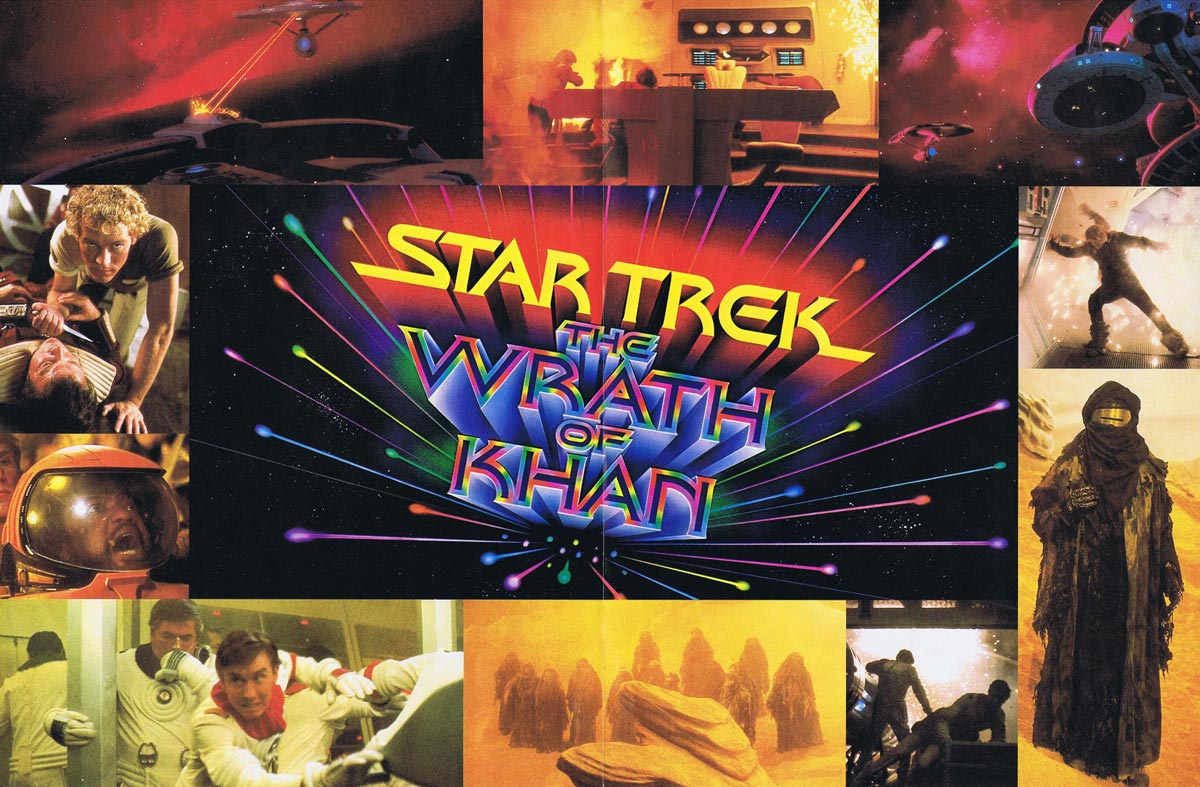
In Star Trek II, we find that Admiral Kirk (William Shatner) is on the brink of retirement, and this very much disturbs him; he fears growing older, and feels that he may not have the wherewithal to continue adventuring. This is, of course, a concern of everyone who ages (i.e. everyone), including Shatner himself. In 1981, during the filming of Star Trek II, William Shatner had recently turned 50, and hadn’t landed many major acting roles since Star Trek went off the air 12 years previous. He wasn’t yet cast as T.J. Hooker, and appeared at Star Trek conventions, some have said, wearing an ambivalent smile. He loved the fans and the recognition of his work, of course, but one can perhaps intuit that he was enjoying a form of fame that actually prevented him from working elsewhere. So returning to the role of Kirk in 1981 may have been enjoyable, but also a mite wearying for Shatner.
Shatner’s own career lends an extra little oomph to Kirk’s predicament. A new generation of Starfleet officers are taking up command underneath Kirk, and the beloved character is finding himself destined to “sit behind a desk.” Kirk doesn’t want it, Shatner is certainly feeling it, and the fans likely ache at the thought of a character they’ve loved for almost 20 years retiring. And, yes, he had to start wearing glasses. One would think, in the 23rd century, eye surgery could be done in an instant.
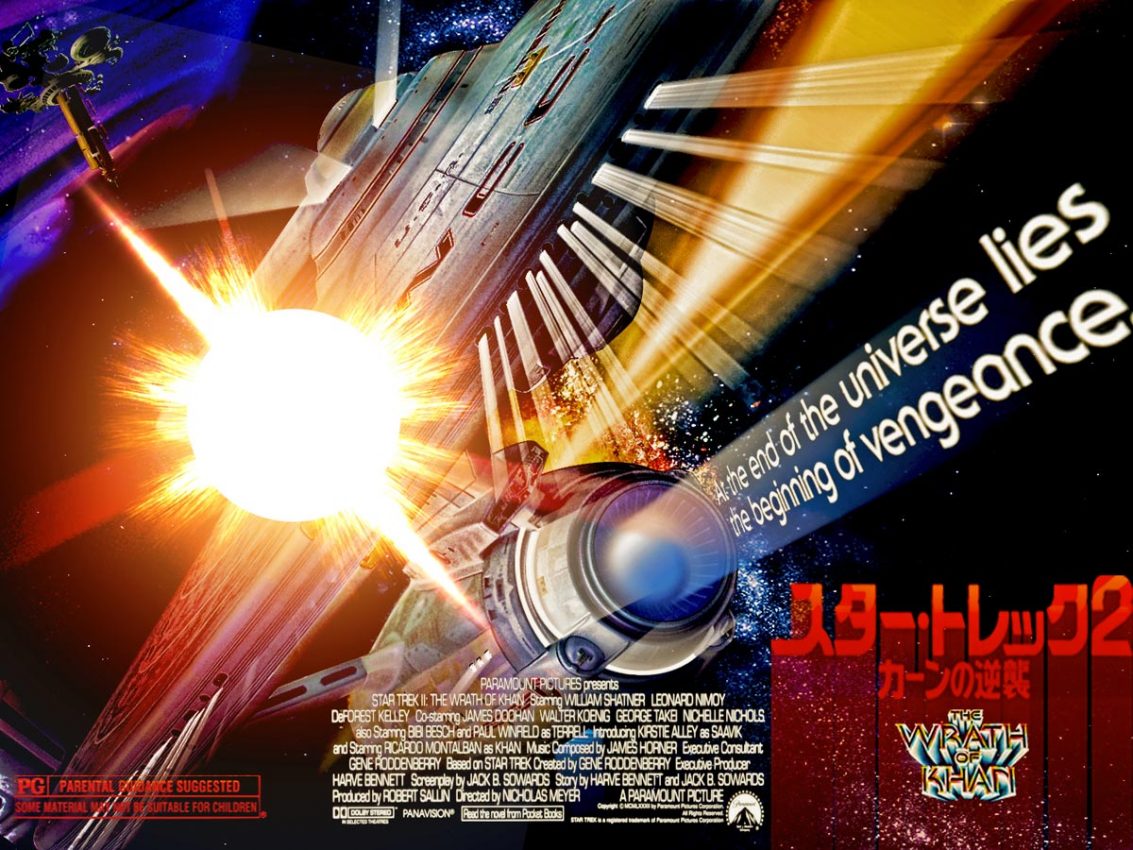
Into this midlife crisis looms two specters from the past: the first is Khan Noonien Singh from the classic episode “Space Seed.” Hey Kirk, remember when you left him and his genetically enhanced brethren to make a lonely Eden on Ceti Alpha V about 15 years ago? Yeah, that didn’t work out. The solar system hiccuped, and his planet turned into an uninhabitable desert wasteland. Now he wants revenge. In addition to aging out, Kirk now has to accept the fact that his reckless actions as captain left dark consequences in their wake.
It’s easy to read Khan’s revenge as a wartime metaphor. America has been infamously brazen in its interference in foreign conflicts, and we often refuse to openly acknowledge, or at least make proper reparations for the scars we leave behind. Knowing, as one does, the works of Gene Roddenberry, the original creator of Star Trek, one can say he likely had a great influence in this reading; Roddenberry was very anti-war, and it was brilliant to take what is essentially a random episode of the original show, and find that it can leave scars on Kirk 15 years after the fact. How much fun it is to ponder what kind of films could be sequelized from other episodes of the show.
The second specter is a son Kirk didn’t know he had. David Marcus (Merritt Butrick) is a hot-headed scientist who doesn’t know Kirk is his father, and then resents him when he finds out. Not only were Kirk’s glory days filled with reckless wartime abandon, but his womanizing can leave behind children and broken hearts.
Star Trek II is, essentially, a deconstructionist Star Trek film.
I will not reveal the ending of this film. Even though the events of Star Trek II are well-documented, repeatedly repeated, and even re-worked in inferior Star Trek films (especially Star Trek Into Darkness), I will leave them to be discovered by any of the uninitiated. Needless to say, there is a great sacrifice that Kirk has to live with. Everything used to turn out well for Kirk. Not this time.
All of this personal struggle, however, is leavened by a brisk and action-packed tone. Star Trek II, for all its deconstruction, is a blast to watch. It was also daring of the filmmakers to stage the final conflict as a slow-moving submarine-style stealth stalk when so many other sci-fi films of the time were speeding up, going the way of Star Wars.
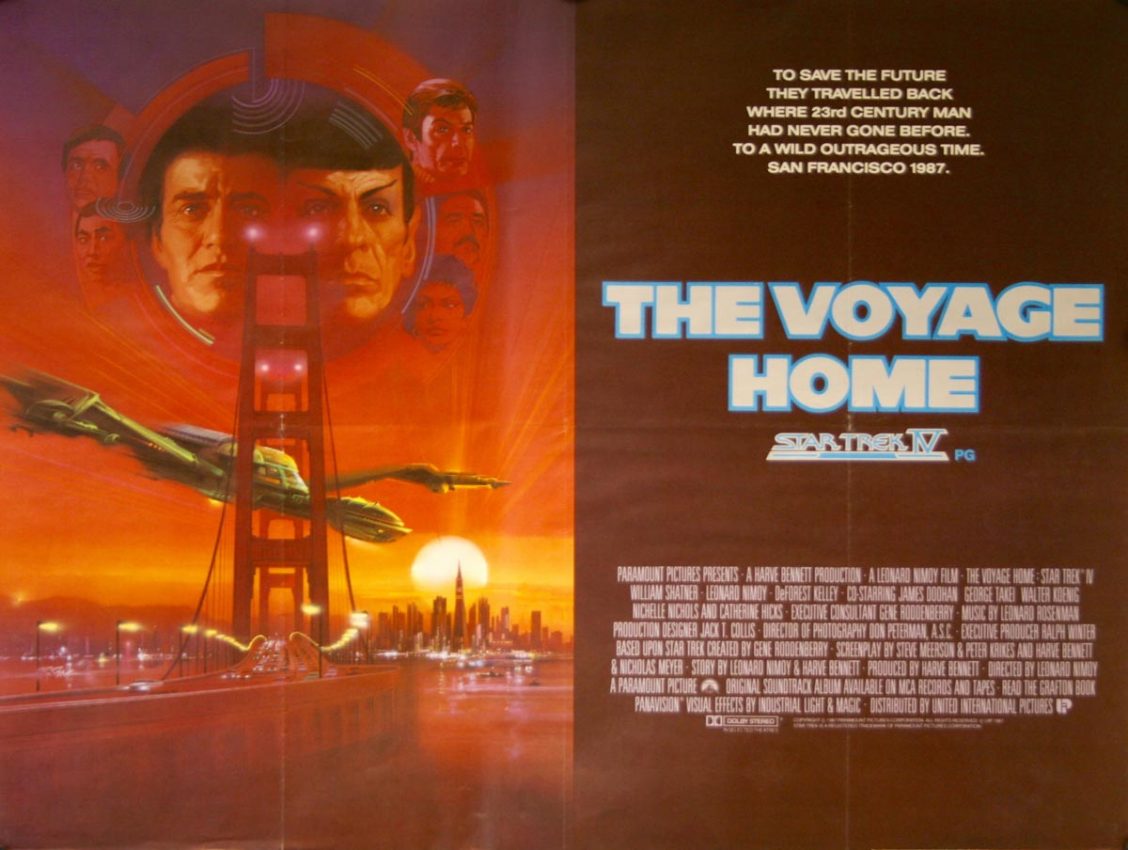
If Star Trek II is deconstructionist, then Star Trek IV is re-constructionist. It’s all adventure, all reward. Kirk and company are all back together – one of them having even been resurrected from the dead – and they are, just as they are most comfortable being, Earth’s last hope. No one is pushed to a new limit in Star Trek IV. No one has any dark lessons to learn. It’s a bright, brisk, fun, pretty wonderful story of how Star Trek characters might interact with modern-day (that is, 1986) Americans. Star Trek IV celebrates the characters without fundamentally changing them.
The plot is a risky one: A mysterious space probe is casually emptying Earth’s oceans, looking for extinct-in-the-23rd-century whales. Kirk and co. arrive in a disused Klingon ship (The Enterprise was destroyed in Star Trek III: The Search for Spock, an underrated film to be sure) and – just like that – go back in time to find some whales, bring them back to the future, and appease the space probe.
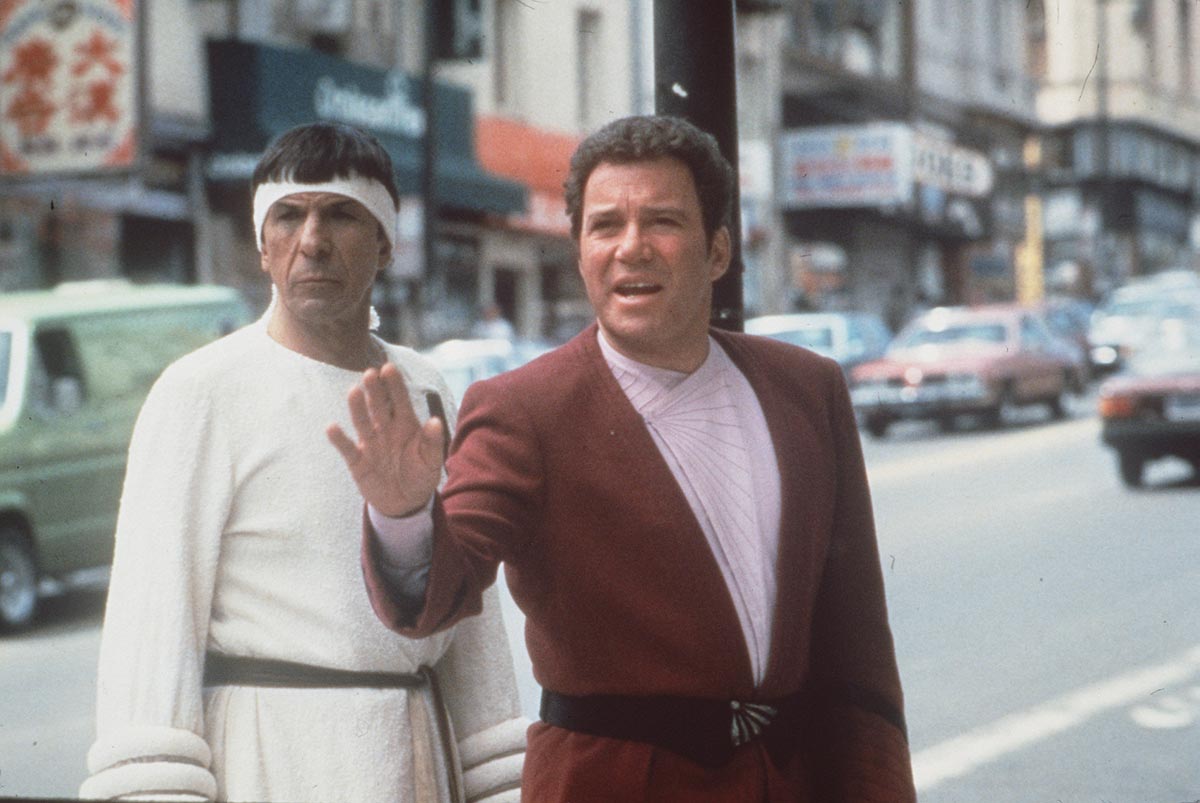
Yes, there are themes of irresponsible ecology, and how humanity’s casual destruction of the environment can have unintended consequences, but they don’t play nearly as heavily as the wartime echoes of Star Trek II. The ecological messages of Star Trek IV are earnest, but light. They play into a cause that was very much in the news in 1986: saving the whales. What’s more, the tone is nothing short of sunshine. This is a lighthearted film.
This lightheartedness was actually considered something of a risk in 1986. Star Trek wasn’t a sure thing in 1986, as Star Trek III wasn’t an enormous hit, and many still see it as a stop-gap that only exists to resurrect a character. Star Trek IV could have done anything it wanted, and it took a risk on a silly tone and a the-universe-is-not-ending story. As stated above, it was a huge hit. I think audiences were ready for something from Star Trek that wasn’t ponderous or serious. In 1986, audiences didn’t want deconstruction. They wanted slick, fun commercial entertainments. They wanted their heroes back, and they wanted them to merely do what we’ve always wanted them to do. Star Trek IV was ready to give it to them.
They are both great films and watching them in succession may provide you with a portrait of where Star Trek was, what it needed, and how we were able to, in one series, disassemble and reassemble our heroes.

